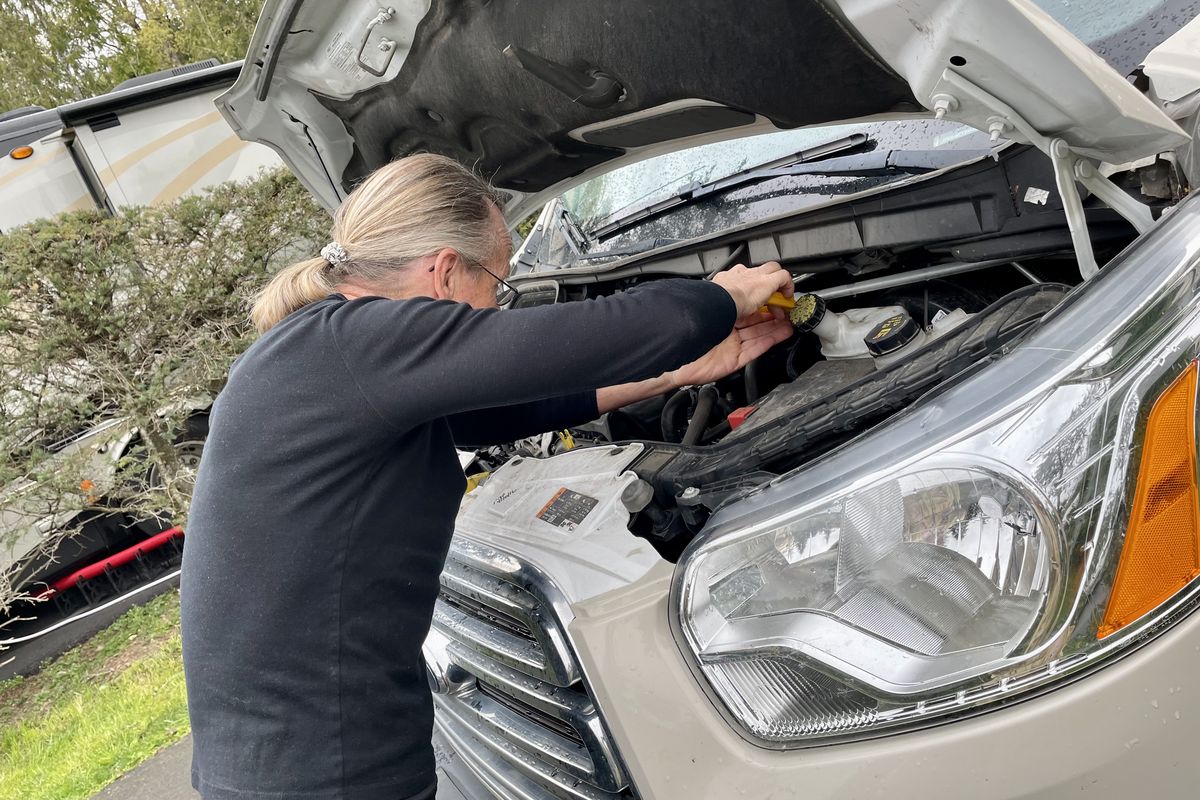How we solved our mouse-in-the-house mayhem

Nothing freaks you out quite as much as seeing a mouse racing around inside your RV.
We’ve been there -- a few times. And we’ve even had mice do major damage to the engine of our rig. Judging by the number of anti-mice products on the market, it’s a real concern for RVers everywhere.
Here’s a sampling of our mouse tales over the years.
The first time we saw a mouse in our RV living room was during our inaugural RV adventure in 2018. We were staying at Mather Campground in Grand Canyon National Park, and suddenly little Despereaux made an appearance, walking around like he owned the place -- our place, that is.
It was late at night and John was reading on the couch in the front of the rig. He caught a glimpse of a mouse scurrying toward him and yelped, “What the ____!”
Leslie woke up and we searched high and low through the rig. Despereaux eluded us, which isn’t surprising given all the nooks and crannies in an RV. So we drifted off to a troubled sleep, all the while imagining that our little pal was climbing under the covers with us that night.
We bought mouse traps, and the next night dutifully set them out, baited with peanut butter. Then we waited for the tell-tale “Snap!” It never came. Despereaux licked the traps clean without springing them. So we tried again the next night and -- you guessed it -- same result.
This was one smart mouse in our house.
When we moved on down the road, we never saw signs of Despereaux again, so we figured he stayed in the Grand Canyon. A few months later, it happened again at another national park -- Yosemite.
That’s when it dawned on us that national park campgrounds must have a lot of mice. It makes sense -- lots of campers leave lots of food scraps, a perfect banquet for attracting critters.
But how were they getting into our rig? It turns out mice are very good at sneaking into vehicles through the engine and the accelerator pedal.
We started setting out traps regularly, caught a mouse or two, eventually blocking access through the accelerator pedal using steel wool as a barrier.
Then last year, we were traveling in New Mexico at another popular campground -- Rio Grande del Norte National Monument -- when we saw something curious. Mice don’t always try to enter through the engine. In this case, a mouse had attempted to get into our rig through the tiny gap in the cab door and gotten stuck. He was dead by the time we found him, just a flattened corpse. Yikes!
So we were on high alert for rodents as we traveled into the Sonoran Desert of Arizona last winter, where mice and pack rats are notorious for crawling into engine blocks and creating cozy nests. We learned from other campers to leave our engine hood open at night and place blinking lights under our rig to ward them off.
If only we had known about this in 2022. During a long break from travel, some mice took up residence in our engine, creating a cozy little condo from our engine wiring and ruining our cooling system in the process.
Lessons learned -- keep an eye on that engine block, set out the lights, prop open the hood.
What else can you do to keep them out of your rig?
A quick Internet search reveals dozens of products, from spays to plug-in ultrasonic gadgets. Peppermint spray is a favorite, and under the DIY category, dryer sheets apparently work, too. We’ve added those to our steel wool anti-mouse defense system around the gas pedal.
What’s your rodent story?
We’d love to hear from other RVers who’ve had rodent problems. What was your remedy? Tell us your story in an email at goingmobile@spokesman.com, or hit us up on Instagram (instagram.com/goingmobiletravel) or Facebook (facebook.com/goingmobiletravel).
